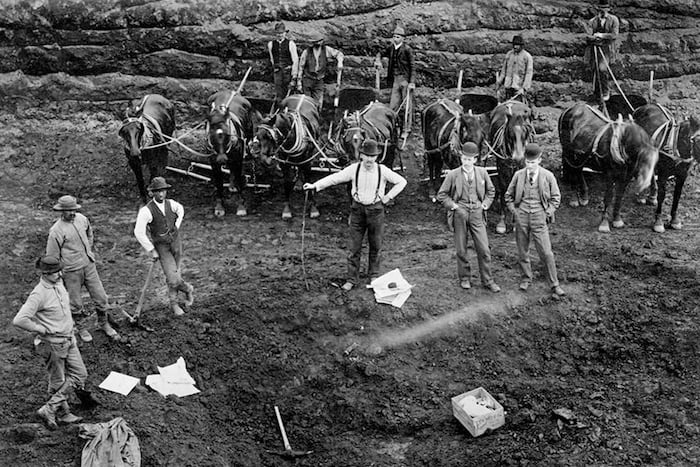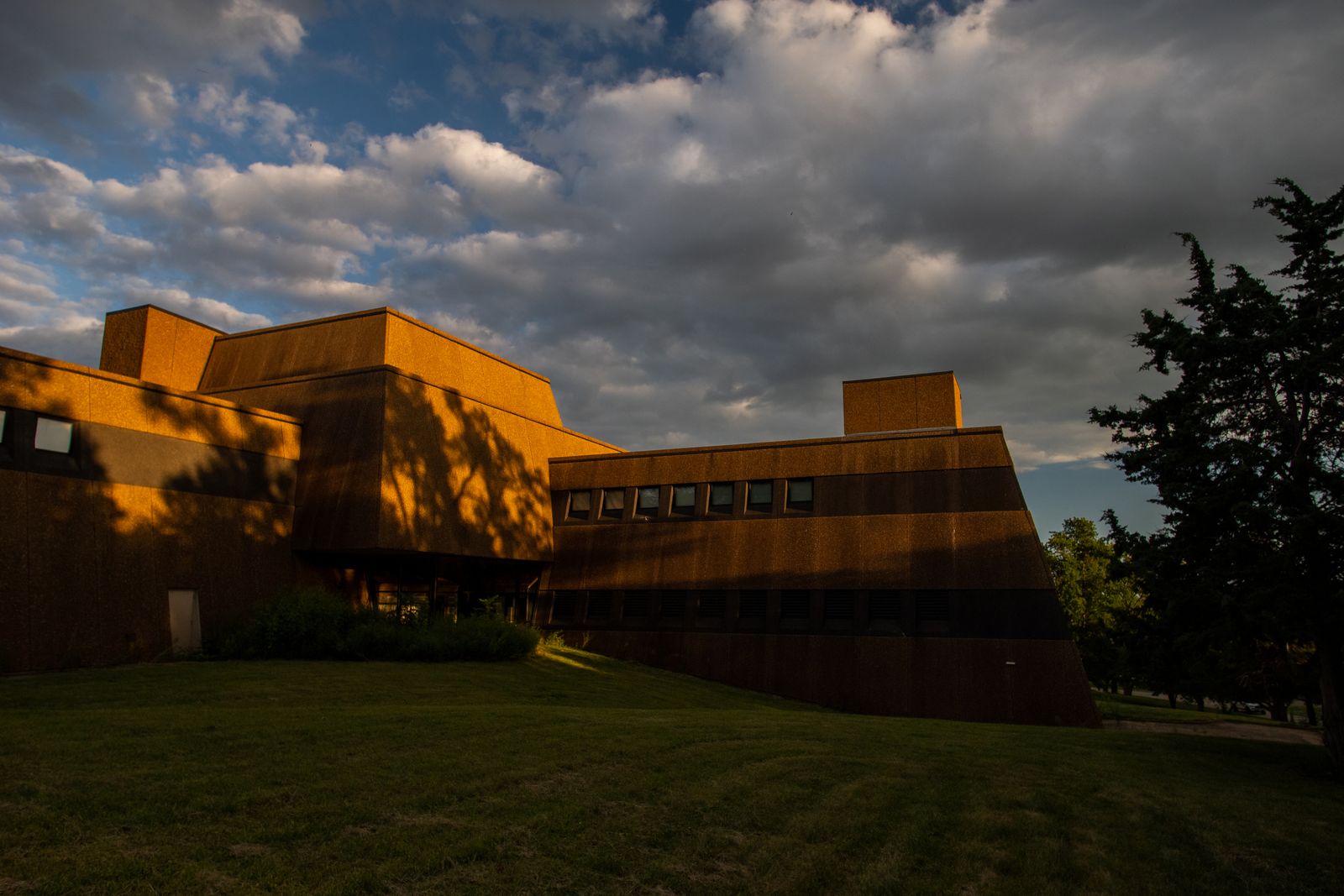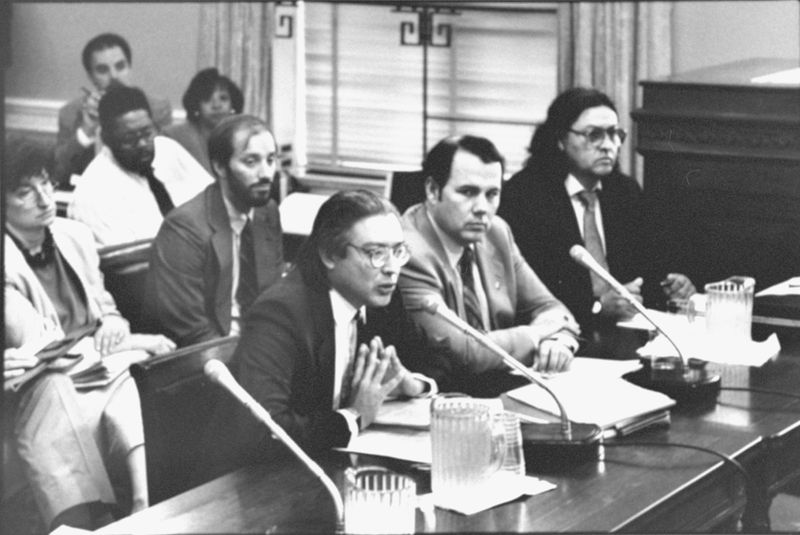Iowa
Institutions reported making 92% of the more than 1,600 Native American remains taken from Iowa available for return to tribes under NAGPRA.
There are 10 institutions located in Iowa that reported Native American remains taken from across the country.
| Institution | Remains Not Made Available for Return | Remains Made Available for Return | % of Remains Made Available for Return |
|---|---|---|---|
| University of Iowa, Office of the State Archaeologist | 29 | 1,419 | 98% |
| Putnam Museum | 9 | 6 | 40% |
| University of Northern Iowa | 7 | 0 | 0% |
| Grout Museum of History and Science | 6 | 0 | 0% |
| Palmer Foundation for Chiropractic History | 6 | 4 | 40% |
| U.S. Department of the Interior | 4 | 70 | 95% |
| Salisbury House | 3 | 0 | 0% |
| Coe College | 0 | 7 | 100% |
| Sioux City Public Museum | 0 | 1 | 100% |
| State Historical Society of Iowa | 0 | 221 | 100% |
There are 22 institutions that reported Native American remains taken from Iowa.
| Institution | Remains Not Made Available for Return | Remains Made Available for Return | % of Remains Made Available for Return |
|---|---|---|---|
| University of Arkansas | 45 | 0 | 0% |
| U.S. Department of Defense | 33 | 0 | 0% |
| Harvard University | 16 | 2 | 11% |
| Wisconsin Historical Society | 8 | 0 | 0% |
| University of Iowa, Office of the State Archaeologist | 7 | 1,124 | 99% |
| Milwaukee Public Museum | 5 | 0 | 0% |
| Putnam Museum | 4 | 1 | 20% |
| Field Museum | 3 | 0 | 0% |
| Grout Museum of History and Science | 2 | 0 | 0% |
| University of Missouri, Columbia, Museum of Anthropology | 2 | 0 | 0% |
| Cleveland Museum of Natural History | 1 | 0 | 0% |
| Dartmouth College, Hood Museum of Art | 1 | 0 | 0% |
| Hastings Museum | 1 | 0 | 0% |
| Illinois State Museum | 1 | 0 | 0% |
| University of Arizona, Arizona State Museum | 1 | 0 | 0% |
| Bess Bower Dunn Museum | 0 | 1 | 100% |
| South Dakota State Historical Society, State Archaeological Research Center | 0 | 1 | 100% |
| Springfield Science Museum | 0 | 1 | 100% |
| State Historical Society of Iowa | 0 | 213 | 100% |
| U.S. Department of the Interior | 0 | 70 | 100% |
| University of Nebraska State Museum | 0 | 14 | 100% |
| University of Tennessee, Knoxville | 0 | 44 | 100% |
Institutions made Native American remains taken from Iowa available for return to 36 tribes.
| Tribe | Remains Made Available for Return to Tribe |
|---|---|
| Iowa Tribe of Oklahoma | 758 |
| Iowa Tribe of Kansas and Nebraska | 757 |
| Otoe-Missouria Tribe of Indians, Oklahoma | 757 |
| Three Affiliated Tribes of the Fort Berthold Reservation, North Dakota | 640 |
| Omaha Tribe of Nebraska | 612 |
| Ponca Tribe of Indians of Oklahoma | 598 |
| Ponca Tribe of Nebraska | 598 |
| Ho-Chunk Nation of Wisconsin | 523 |
| Winnebago Tribe of Nebraska | 522 |
| Institution could not determine a culturally affiliated tribe and remains were transferred or reinterred according to state or other law | 462 |
| Lower Sioux Indian Community in the State of Minnesota | 461 |
| Flandreau Santee Sioux Tribe of South Dakota | 450 |
| Santee Sioux Nation, Nebraska | 450 |
| Sisseton-Wahpeton Oyate of the Lake Traverse Reservation, South Dakota | 450 |
| Yankton Sioux Tribe of South Dakota | 450 |
| Pawnee Nation of Oklahoma | 447 |
| Sac and Fox Nation of Missouri in Kansas and Nebraska | 423 |
| Sac and Fox Nation, Oklahoma | 423 |
| Sac and Fox Tribe of the Mississippi in Iowa | 423 |
| Citizen Potawatomi Nation, Oklahoma | 395 |
| Peoria Tribe of Indians of Oklahoma | 395 |
| Prairie Band of Potawatomi Nation | 395 |
| Upper Sioux Community, Minnesota | 133 |
| Cheyenne River Sioux Tribe of the Cheyenne River Reservation, South Dakota | 80 |
| Spirit Lake Tribe, North Dakota | 80 |
| Miami Tribe of Oklahoma | 67 |
| Osage Nation | 67 |
| Shakopee Mdewakanton Sioux Community of Minnesota | 65 |
| Crow Creek Sioux Tribe of the Crow Creek Reservation, South Dakota | 55 |
| Prairie Island Indian Community in the State of Minnesota | 53 |
| Standing Rock Sioux Tribe of North and South Dakota | 43 |
| Lower Brule Sioux Tribe of the Lower Brule Reservation, South Dakota | 13 |
| Oglala Sioux Tribe | 13 |
| Rosebud Sioux Tribe of the Rosebud Indian Reservation, South Dakota | 13 |
| None | 6 |
| Assiniboine and Sioux Tribes of the Fort Peck Indian Reservation, Montana | 1 |
Institutions reported Native American remains taken from 60 counties in Iowa.
| County | Remains Taken From County Not Made Available for Return | Remains Made Available for Return | % of Remains Made Available for Return |
|---|---|---|---|
| Polk County | 45 | 105 | 70% |
| Marion County | 17 | 1 | 6% |
| Dubuque County | 12 | 23 | 66% |
| Boone County | 9 | 15 | 63% |
| Floyd County | 6 | 13 | 68% |
| Johnson County | 5 | 4 | 44% |
| Mills County | 4 | 48 | 92% |
| Warren County | 4 | 4 | 50% |
| Jackson County | 3 | 41 | 93% |
| Wapello County | 3 | 0 | 0% |
| Allamakee County | 2 | 250 | 99% |
| Clayton County | 2 | 76 | 97% |
| Black Hawk County | 1 | 1 | 50% |
| Chickasaw County | 1 | 3 | 75% |
| Hamilton County | 1 | 46 | 98% |
| Washington County | 1 | 0 | 0% |
| Adams County | 0 | 1 | 100% |
| Buchanan County | 0 | 1 | 100% |
| Buena Vista County | 0 | 8 | 100% |
| Calhoun County | 0 | 1 | 100% |
| Cass County | 0 | 2 | 100% |
| Cedar County | 0 | 1 | 100% |
| Cerro Gordo County | 0 | 1 | 100% |
| Cherokee County | 0 | 41 | 100% |
| Clay County | 0 | 8 | 100% |
| Clinton County | 0 | 21 | 100% |
| Crawford County | 0 | 1 | 100% |
| Dallas County | 0 | 5 | 100% |
| Des Moines County | 0 | 15 | 100% |
| Dickinson County | 0 | 30 | 100% |
| Fayette County | 0 | 9 | 100% |
| Fremont County | 0 | 5 | 100% |
| Hardin County | 0 | 1 | 100% |
| Harrison County | 0 | 4 | 100% |
| Humboldt County | 0 | 7 | 100% |
| Ida County | 0 | 2 | 100% |
| Jasper County | 0 | 5 | 100% |
| Jefferson County | 0 | 12 | 100% |
| Jones County | 0 | 30 | 100% |
| Lee County | 0 | 2 | 100% |
| Louisa County | 0 | 63 | 100% |
| Lyon County | 0 | 45 | 100% |
| Marshall County | 0 | 1 | 100% |
| Monona County | 0 | 4 | 100% |
| Muscatine County | 0 | 29 | 100% |
| O'Brien County | 0 | 5 | 100% |
| Page County | 0 | 7 | 100% |
| Palo Alto County | 0 | 1 | 100% |
| Plymouth County | 0 | 178 | 100% |
| Pottawattamie County | 0 | 28 | 100% |
| Scott County | 0 | 33 | 100% |
| Shelby County | 0 | 2 | 100% |
| Sioux County | 0 | 2 | 100% |
| Story County | 0 | 5 | 100% |
| Union County | 0 | 3 | 100% |
| Webster County | 0 | 10 | 100% |
| Winnebago County | 0 | 8 | 100% |
| Winneshiek County | 0 | 10 | 100% |
| Woodbury County | 0 | 102 | 100% |
| Worth County | 0 | 2 | 100% |
Know how an institution is handling repatriation? Have a personal story to share? We'd like to hear from you.
Watch an informational webinar with our reporters.
This tool presents a dataset maintained by the National Park Service containing all the Native American human remains and associated funerary objects that institutions have reported to the federal government under the Native American Graves Protection and Repatriation Act. The dataset includes information about the state and county where remains and objects were taken from, which institutions hold them and whether they have been made available for return to tribes.
The data is self-reported by institutions. The amount of unrepatriated Native American remains reported by institutions is a minimum estimate of individuals and institutions frequently adjust these numbers when they reinventory groups of remains. Some institutions that are subject to NAGPRA have also entirely failed to report the remains in their possession. As a result, the numbers provided are best taken as estimates. The actual number and geographic scope of what’s held by publicly funded institutions is larger than what is presently documented.
ProPublica supplemented this dataset with information about cultural affiliation and disposition to specific tribes by systematically parsing the text of Notices of Inventory Completion published in the Federal Register. An additional dataset from the Department of Housing and Urban Development, the Tribal Directory Assessment Tool, was used for the section on remains not made available for return from counties that each tribe has indicated interest in to the federal government.
Institution location and tribal headquarters location information was provided by National NAGPRA. The location of some groups that are not federally recognized was provided through research by ProPublica.
Institutions that are part of a larger entity are grouped. (For example, the Mesa Verde National Park is part of the U.S. Department of the Interior.)
Institutions that have not submitted information to the federal government are not listed. The Smithsonian Institution is not listed because its repatriation process falls under the National Museum of the American Indian Act and it is not required to publicly report its holdings with the same detail as institutions subject to NAGPRA.
If you work for an institution and would like to provide comment on your institution’s repatriation efforts, please email [email protected]. If you think the data is incorrect or have a data request, please get in touch. We are aware of some issues with the accuracy of location information and tribes mistakenly being identified for disposition of Native American remains in published notices.
If you want to share something else with ProPublica, we’d like to hear from you.
If you have questions about implementing or complying with the Native American Graves Protection and Repatriation Act, get in touch with National NAGPRA or the NAGPRA Community of Practice.
We use the word “tribes” to refer to all groups that institutions made Native American remains available to under NAGPRA. This includes tribes, nations, bands, pueblos, communities, Native Alaskan villages, Native Hawaiian organizations and non-federally recognized groups.
Data sources from Department of the Interior, National Park Service, National NAGPRA Program, the Federal Register, Department of Housing and Development, Tribal Directory Assessment Tool


